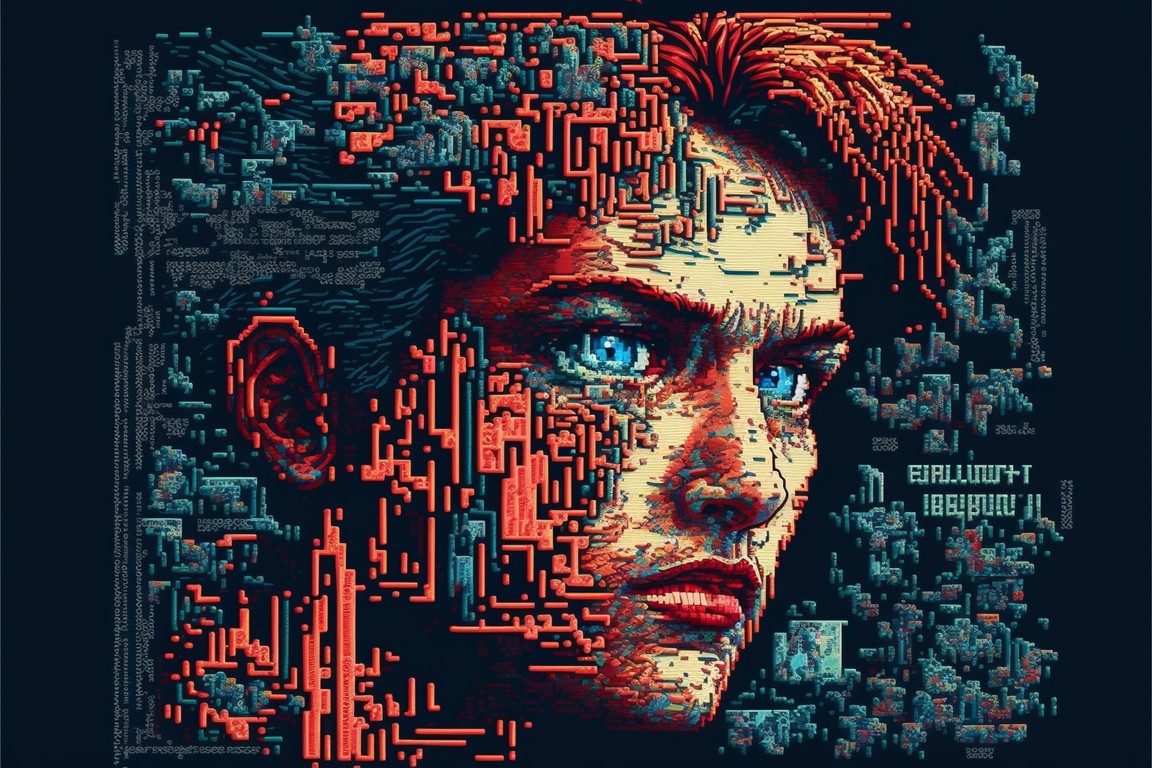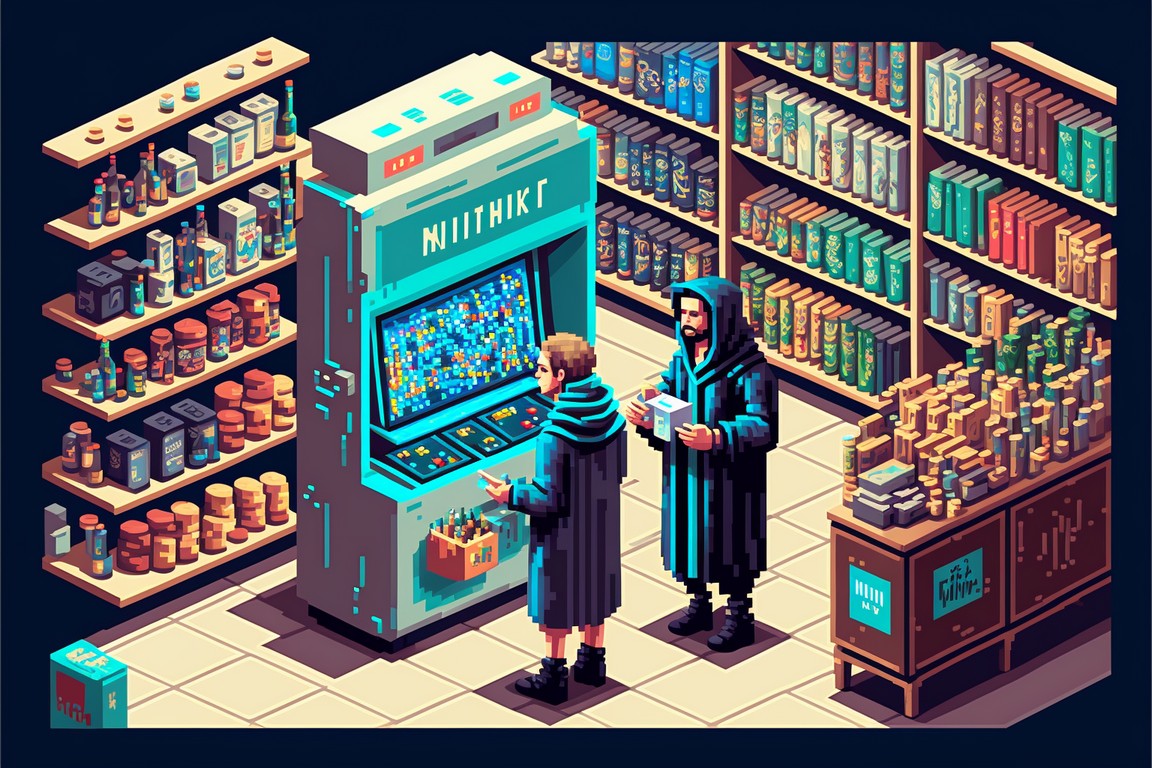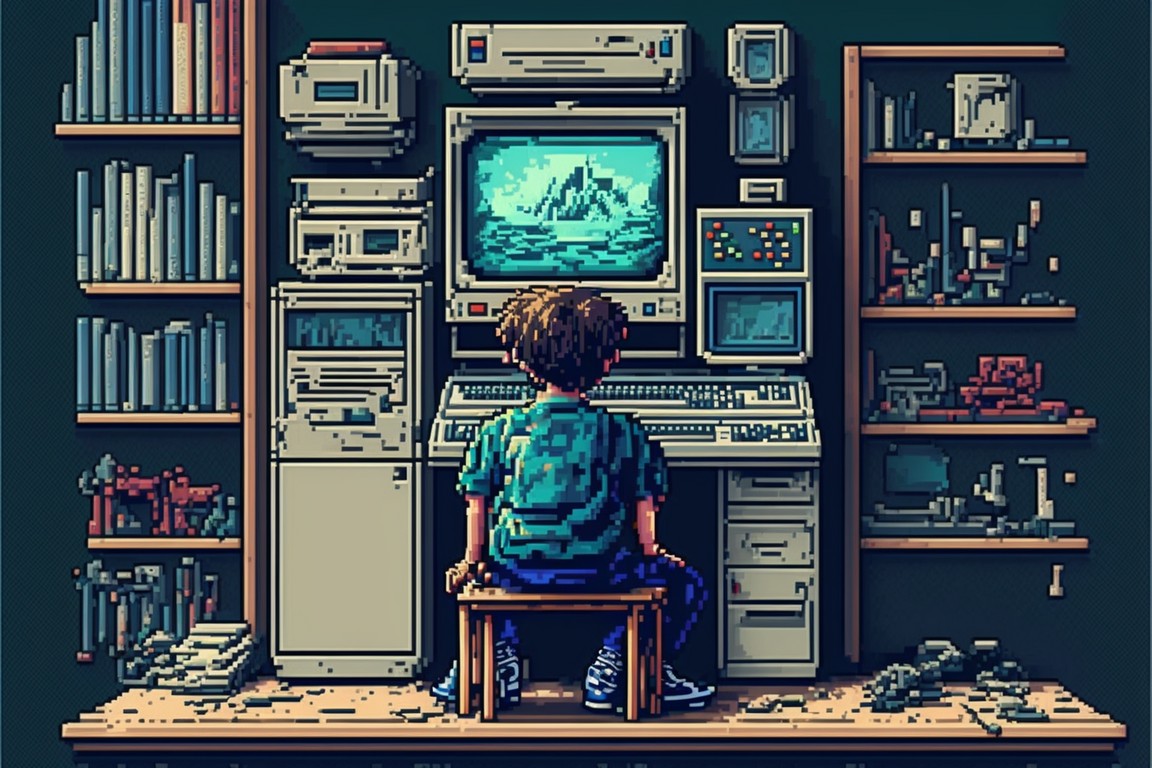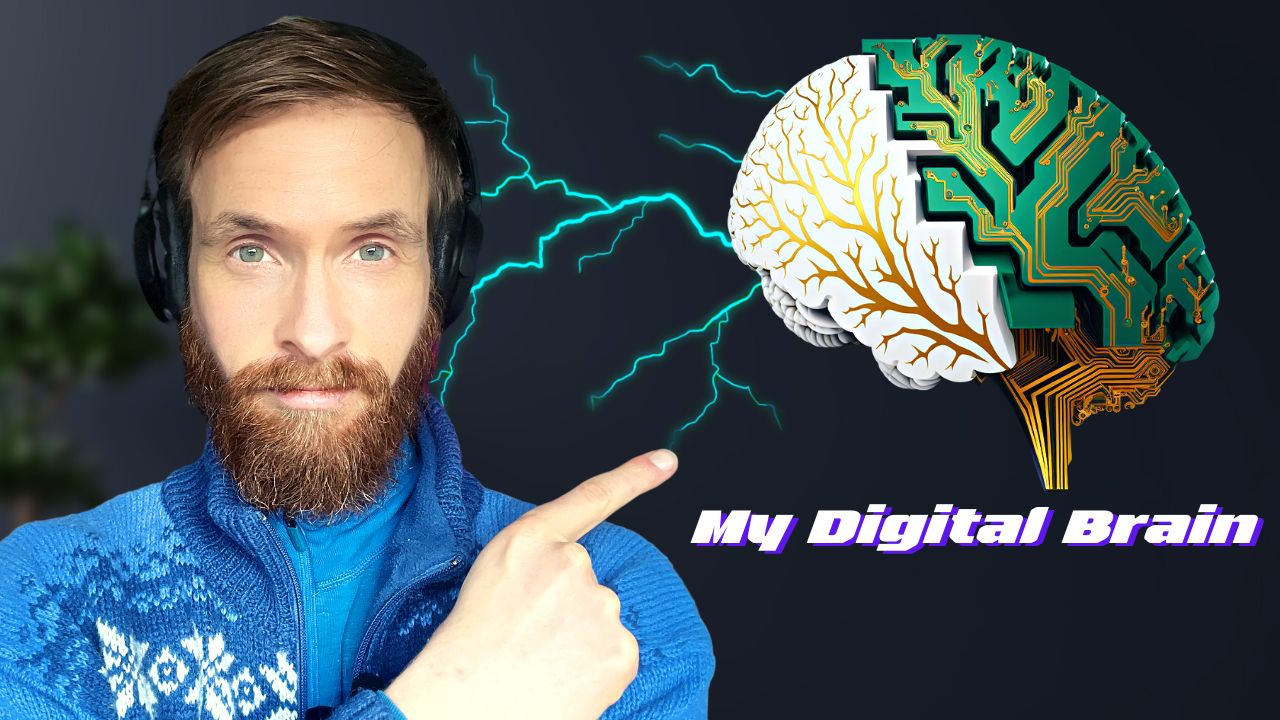Embark on a journey with us as we unveil the secrets of constructing your very own second digital brain. By utilizing cutting-edge Generative AI and GPT-3 technology, this digital system mimics the way our own brains function, delivering a potent weapon for anyone seeking to enhance their productivity and efficiency.
We will take you through the process of building your second digital brain, step by step, starting with laying the foundation, to evaluating its performance and optimizing its memory.
Don’t let the endless sea of information overwhelm you, take control of your knowledge and elevate your productivity with a second digital brain.
Read more or watch the YouTube video(Recommended)
YouTube:
What is a second brain?
A second digital brain is like a GPS for your mind, guiding you through the vast landscape of information and allowing you to reach your destination with ease. Utilizing AI and GPT-3 technology, this digital system mimics the way our own brains work, providing a powerful tool for anyone looking to increase their productivity and effectiveness.
Just like how a GPS allows you to input a destination and find the best route, the second digital brain uses natural language processing and AI to understand and respond to human language, adapt and improve over time, effectively guiding you through the information you need to reach your goals.
Another example of this tool is the use of a digital “memory cave” , a system for storing and organizing information similar to how our own brains do. This can include visual cues, associations, and semantic search to quickly find relevant information when needed.
These tools can aid in processing and understanding information more efficiently, freeing up more of your brainpower to focus on other tasks, just like how a GPS frees up your mind from memorizing routes, so you can focus on the journey.

What is semantic search with vectors?
Semantic search with vectors is the future of information management. It’s like having a personal assistant that can quickly and efficiently find the exact information you need, regardless of where it’s stored.
By using vectors, the computer can compare the words from your search query with the characteristics of each item of information, making it possible to find the most similar matches based on meaning, not just keywords.
Think of it like having a “Google” for all the information stored on your computer. Instead of sifting through countless files and folders, semantic search with vectors allows you to quickly access the exact information you need. This plus Prompt Engineering is a game-changer for productivity and efficiency in the digital age.
How to build a second brain with AI and GPT-3?
Welcome to the ultimate step-by-step guide on how to build a second brain. By the end of this guide, you will have a comprehensive understanding of how to build your very own second brain.:
Step 1: Establising the Foundation for Your Digital Brain
The first step to building your second brain is to prepare the framework. This includes collecting notes over a certain period of time, such as the last twelve days. I like to start by keeping a daily juornal of the activities I’ve undertaken that day, such as work tasks and personal activiities. This forms the backbone of my second brain. Once I have my notes, I convert them into strings and save them into a text file. By doing this, we are creating a dataset for our second brain to use as reference.
Step 2: Evaluating the Performanse of Your Initial Brain
Now that I have the framework for my second brain, it’s time to run it and see how it performs in the real world. To test it out, I like to ask myself questions that I don’t already know the answers to. For example, “When did I drive my mother to the airport?” The computer then compares the words from my qury with the characteristics of each “book” in order to find the most similar matches. This is known as semantic search. Through this, I am able to find the answer I’m looking for. By testing the pre-built brain, we can evaluates its performance and understand the way it is answering our queries.

Step 3: Optimizing Your Brains Memory
Now that I have a basic understanding of my second brain and how it answers questions, I like to move on to more advanced features. One of these features is adjusting the computer’s memory. This is similar to the concept of Westworld where the characters’ memories are deleted or altered. I can do this by deleting a memory from my notes and updating the brain through a build brain script. Then, I could try asking the same questions that I did in step 2 and find out if my memory has been deleted or altered. By adjusting the computer’s memory, we are fine-tuning the performance of our digital brain and making it even more efficient.
Step 4: Expanding Your Brain’s Knowledge with GPT-3
Now it’s time to construct my new brain. I start by finding articles related to the topic of my brain that I want to build. For example, if my topic is OpenAI, I find articles and copy the information from each one into a big text file. Next, I use scripts to convert the text into vectors, then into a JSON object. After this, I am now able to search for questions related to the information I have collected. By constructing a new brain, we are expanding the knowledge and capabilities of our second brain.
Step 5: Testing Your Brain’s Capabillities
It’s time to put my brain to the test. I start by asking the questions I want to know, such as “What happened to OpenAI in 2023?” After this, I should get a summary of all the information from my articles. Then, I can try asking more complex questions, such as “Will Microsoft includes chat GPT in Bing?” My brain will give a conflicting answer because it pulls from different sources. Lastly, I can ask my brain to summarize large sets of information and it should be able to do that. By testing the brain, we can evaluate its performance and understand its capabilities.
Final Step: Achieving Success
And there you have it! I have now built a fully-functioning second digital brain with the knowledge of semantic search with vectors. With the power of this brain, I have the capability to store and search information with ease.

Why do you need a second digital brain?
In this fast-paced and ever-evolving world, we are constantly inundated with an overwhelming deluge of information from all corners of the globe. With access to an endless array of knowledge and resourcess at our fingertips, comes the daunting task of trying to keep track of it all. Our natural human brains, unfortunately, are not equipped to handle the sheer volume of data we are faced with on a daily basis.
But there is a solution, the concept of a second digital brain. Imagine it as a vast and expansive library of information, a personal, searchable database of all that is important to you, easily accessible at any time, from any location. By creating a digital brain, you are constructing a treasure trove of knowledge and information, including everything from personal notes and aspirations, to work-related research and projects.
In my own experience, having a second digital brain has been nothing short of invaluable, a lifesaver in staying organized and on top of my many responsibilities. It empowers me to effortlessly recall information from the past and make connections that would have otherwise been impossible. And as I continue to expand and enrich my second digital brain over time, it will only continue to grow in power and usefulness.
So, if you too find yourself feeling overwhelmed by the sheer volume of information in your life, consider the potential of building your own second digital brain. It could be the answer you have been looking for to take control of your knowledge and skyrocket your productivity.

Conclusion
In summary, constructing a second digital brain with the aid of advanced AI and GPT-3 technology can revolutionize productivity and efficiency. This digital system mimics the functions of our natural brains, acting as a beacon in the vast ocean of information. By laying the foundation, evaluating performance, and fine-tuning memory, we can forge a powerful tool that adapts and evolves over time.
Don’t allow the deluge of information to overwhelm you, seize control of your knowledge and soar to new heights of productivity by building your own second digital brain. By following the step by step guide, you too can unlock the full potential of AI technology and create a second brain of your own.



Amazing!! I’d love to get access to the code for this. I’ve been trying to solve this exact challenge for myself, as I take tons of notes. I saw something on discord a about a GitHub repo. I’ve joined your mailing list, subscribed on YouTube, and joined your Discord servers. I just don’t see access to that repo. Looking forward to your response!
– Austin
Awsome 🙂 I have sent you an e-mail 🙂 (check spam if you dont see it)
This article has become a great inspiration for me. I’m using Obsidian to build the second brain, but your way is better and more importantly faster for searches and summaries. You write here about a python script that makes it even easier. Apparently, it is also compiled for those who do not know programming. I have subscribed so I believe the newsletters will be as inspiring as this website. Thank you for it.
Yes, sent you an e-mail 🙂 (check spam if you dont see it)
Would love access to the code as well as the ChatGPT to Voice please, amazing videos!
Would love the code too please!
sent you a mail, check spam folder for sure 🙂
Me too, please! Thank you!
Hello! sent you a mail with info about building a second brain with AI and GPT
hello can you please share the code with me as well.
Hello 🙂 yes, sent you a mail with info on how to access the build a 2nd brain script with AI 🙂
Please send me code to build second brain
I would love the code, more help, or more info on this. REALLY want to learn to do this!
Hello 🙂 For sure, i just sent you a mail with info about hwo to access the building a 2nd brain with AI project 🙂
Loved the article and approach! Would you be able to send me the code as well? 🙌🤙
Hello 🙂 Yes just sent you a mail with info on the 2nd brain project scripts 🙂
can you forward that code to me
I’d also love to know how to set this up and also that video where you train gpt on books. It’d be cool to train gpt on google calendar, is that possible? Then it could just read my calendar without me needing to rewrite the information. Also if it could inside of a note taking (obsidian, notion etc) app even better
And lastly, is this stuff possible with gpt2? Cause there’s a few releases of that downloadable so you can use it for free. The concept (at least the diary thing) doesn’t seem that difficult – so if it’s possible to save tokens then all the better right.
Yeah i think so 🙂 but dont expect amazing responses
Sent you a mail 🙂
Hi Kristian. I came upon your video and your website. I am interested in seeing how you were able to accomplish this. Would it be possible for me to also take a look at the code?
Sent you an e-mail 🙂
Id love to see the code for this as well!
Hello 🙂 I just sent you a mail with info about how you can access the script to the build your 2nd brain project!
interested to see your code for this romp!
Sent you an e-mail 🙂
Hi from India Kristin.
Amazing idea, I have watched all of your videos, stilling following, great fan of yours. great if you could share the code. Thanks in advance!!
Yes, sent you an e-mail 🙂 (check spam if you dont see it)
This is amazing! Can i also get a look at the code? There are so many possibilities. I’m glad I came across your yubtub (youtube) channel.
Hello everything is fine? I liked your videos and the blog, I was interested in seeing your code to see where I get.
I’m from Brazil and youtube is delivering its content here for anyone researching the topic. Thank you for the informations. By Google tradutor😄👍
Yes, sent you an e-mail 🙂 (check spam if you dont see it)
It’s been a challenging task and I could really use some second brain help. Could you kindly share the code with me?
Yes, sent you an e-mail 🙂 (check spam if you dont see it)
I would love the code, more help, or more info on this. REALLY want to learn to do this!
Kristian:::
Great content! Quick question. Echoing the requests of other users, can you send me the Python code script you are using to generate your second brain? Also, would you happen to know if there is a comparable set of libraries used in R to develop Semantic Search with Vectors?
Thanks for your content. You have a new fan.
Regards,
Brice Richard
Data Scientist
Washington, DC USA
Yes, sent you an e-mail 🙂 (check spam if you dont see it)
Hi Kristian
May I please ask for you to share the code and any other helpful information for this project I’d love to have a go.
Thank you in advance it’s very much appreciated given the hard work you put in to make these a reality
Yes, sent you an e-mail 🙂 check spam folder
Interesting acticle will like to see the code for this.
Yes, sent you an e-mail 🙂 check spam folder
Amazing post, I am also interested in the python scripts. Thank you!
yes! send you a mail with more info about how you can build your second digital brain with AI
Hi Kristian,
Wow, this is such great content, definitely blew my mind. Thank you for sharing and putting in such deep work into making the complex easier to understand on second brain. I would like to ask if you could share your code on this.
Yes, sent you an e-mail 🙂 check your spam folder
Thank you so much for posting this Gem! I would love to learn more about the code you use for this if you would be open to sharing 🙂
Yes, sent you an e-mail 🙂 check your spam folder
Thank you for the post! I appreciate sharing with us your work, Second Brain. Is this being github repo public for us to make contributions? Thank you.
Yes, sent you an e-mail 🙂 check your spam folder
Hi Kristian
May I please ask for you to share the code for this project? I’ve been wanting to start a “second brain” recently and I think this will be it.
Thanks for your hard work!
Yes, sent you an e-mail 🙂 check your spam folder too
Hi Kristian,
Thanks for improving how I interact with ChatGPT. Your tips are great!
Can you share the second brain code with me? I know some Python and I hope I will be able to use it somehow.
Yes, sent you an e-mail 🙂 check your spam folder
That’s awesome! It would be great if you could give me access to the code.
Hey Kristian,
I was fascinated by your YT video on this topic how you built a Second Brain with AI (GPT-3). I’ve been researching how to personalizing an AI engine with my own data. Could please share the code for this project? I’ve been wanting to build something similar on a mobile platform and I think this could very well be an excellent start.
Thank you for sharing your work in this field.
Yes, sent you an e-mail 🙂 check your spam folder
Hi Kristian!
Thanks for your work on this. I came across your videos yesterday on YT, and I think this is a great idea. Even if you don’t share the code, a video explaining semantic vectors in more depth and your thought process would be fantastic! May I also request a look at your code? Keep up the great work!
Yes, sent you an e-mail 🙂 check your spam folder
Great article! I would also love to learn more about this approach. Thanks.
Yes, sent you an e-mail 🙂 check your spam folder
Hi Kristian, this is really great info about prompts. How can I join the discord server?
Thnx 🙂 here : https://discord.gg/Xx99sPUeTd
Hello!
I want to learn more too 🙂
Thanks!
Yes, sent you an e-mail 🙂 check your spam folder
Awesome post! Can I get the code as well please
I sent you an e-mail 🙂 check your spam folder
Hi, I stumbled upon your site, more specifically your video on Second Brain. Bloody amazing. Is it possible to have a look at the code. I would like to see how I can use it with a DB of Data.
Love your youtube channel. Awesome work.
I sent you an e-mail 🙂 check your spam folder
Hi Kristian,
absolutely fascinatedabout it. Could you share the prompt?
Thanks
Giacomo
I sent you an e-mail 🙂
Amazing, I’ve tried note taking apps before but never come across something that quite suited my needs. THIS looks to be the answer, especially for someone as forgetful as myself! Is there a more indepth tutorial about how to actually set up and launch such a system?
I sent you an e-mail 🙂
Hi Kristian, this is so great! Do you mind sharing the code with me? Keep up the good work 🙂
I sent you an e-mail 🙂
I would love to tinker with this, where can I possibly find the code?
Mail 🙂
I very much impressed,i can do something amazing with this, kindly could share the code?
I sent you an e-mail 🙂
Can i have access to the source code kindly
I sent you an e-mail 🙂
I would love to get access to this code and making tutorial but members onlyt content is not aviliable in my country so can you pl let me know do can i get that… thansk BTW
Hello 🙂 I sent you an e-mail!
Hello, Kristian can you share the code with me? thank you in advance. Your blog is amazing!
Tnx 🙂 Just sent you an e-mail 🙂
Hello,
Super Article, I am not an expert developer but I am curious to discover your Script!
Hi👋 ! Great article!
Can you share the code please?
e-mail sent 🙂
Hi Kristian,
Excellent stuff from you again.
May I get access to the code you used to build 2nd brain?
Thanks a million.
Hi Kristian,
My plan was to feed whole books so the base for the answeres are based on books. In my example it would be medicine. Could you send me the code so I can play around a bit.
Thanks in advance.
sent a mail =)
Hi Kristain,
Absolutely wonderful idea.
I see several use cases i like to try this.
Would it be possible to send me source code?
Thank you very much.
amila
Hello 🙂 Sent you a mail 🙂
Wow! What an amazing concept! I am working on a script to get GPT to interact over Siri which has been challenging and fun. I would love access to the GitHub so I can integrate your project into that shortcut! Imagine being able to query and Save information through a voice assistant in natural language!
Thats impressive! A second-brainer! Please teach me how to do that!
Hello! sent you a mail about Building a Second Brain with GPT-3.5 🙂
Hi, Kristian:
Along with others commenting here, definitely looking forward to seeing the source code for this concept.
I personally don’t like not having control over where my data is stored, so this is a fantastic alternative for the moment.
Thanks ahead of time!
Hello! sent you a mail about Building a Second Brain with GPT-3.5 🙂
I’d be very interested to know more about this. Can you please share the details? Thanks!
Just read the article, would you send the source code? How do you work around this apparent limitation to retain historical data (i.e., the ‘second brain’ knowledge in your metaphor). Train the model? Thanks for your reply…
“The model is able to reference up to approximately 3000 words (or 4000 tokens) from the current conversation – any information beyond that is not stored.”
Sent you a mail about with info about the Second Brain GPT Python Project
Hi, Kristian:
Along with others commenting here, definitely looking forward to seeing the source code for this concept.
Thank You
Hello 🙂 Sent you a mail with info about the building a second digital brain with GPT
Hi Kristian thanks for your work and for sharing it with the world! (Amazing) If you’d be so kind kind to email me the source code as well I’d be very thankful. Cheers
Hello 🙂 Sent you a mail with info on the GPT-3 Building a second AI brain project
It looks amazing! Thank you for your hard work!
Could you share the code? Do you already have some courses?
Yes 🙂 Just sent you a mail about how you can build your own second brain with AI and GPT
Hey Kristan,
I love your content and how you have your brain setup. Do you mind sharing your code? I am also interested in any
study material also 🙂 thanks so much for all you do!
Hello! sent you a mail with info about the Building a Second brain with AI 🙂
Hey Kristian,
Just saw your video and I found it very interesting. Is there any way to get your code or more details about the models you use for semantic search? I’d love to test it and to see if it is adaptable to some knowledge graph.
Hello! Sent you some info about how to build a second brain with AI
Amazing implementation. I’m very interested in digging into the code to find new ways that I may be able to integrate new features with OpenAI!
Hello:) Sent you a mail with some info about how to build a second brain with GPT and AI
A second brain? really? This I gotta know. Would you be so kind to provide more details on this.
Thank you so much!
This looks so amazing, I’m using obsidian to manage my knowledge right now, but when I saw this article of yours, it makes me feel like a new world has opened up. I would like to ask if you can share your code for me to learn?
Very cool! I would like to ask for source code 🙂
Very interested in seeing your code for this, I have been thinking about how to expand my digital exocortex and think that this lays an interesting foundation for things going forward. It’s going to get very interesting when there are higher bandwidth ways of interfacing with our machines
Hi! Sent you a mail with info about how to build a second brain with GPT, Python and AI
Please send the repo link to me
I use an app called obsidian md to take notes I’ve been trying a lot lately to find related notes and I’d like to take a look at this script and see if I can add it to my obsidian workflow. could you please email me?
Yes! Sent you a mail with some info about how to build a second digital brain with GPT and AI
I’m using Obsidian MD and Canvas to create a feature that allows me to take a specific note and display notes that are related to that note, as well as notes that I might want to reference. This post will be very useful for my work.
I’d really like to check out your great work… do you mind if I ask for a link?
Hello 🙂 Sent you a mail with some info about bulding a second brain with AI and GPT from OpenAI
Love your website. Joined your email list yesterday. I am eager to check out your code. Please send. 🙂
Thnx 🙂 Sent you a mail with more info about the second brain project 🙂
THANK YOU FOR THIS! Can I please get access to your step by step system to building this second brain? I needed a second brain like yesterday, and my brain is about to EXPLODE with all the information that I have in here, my journals, Notion, MS to-do, MS access, MS Excel, Google Calendar.
Hello! I sent you some info about the Building Second Brain with AI system 🙂
This is awesome! Could you send the code to me too, please? Thank you!
Yes! Sent you a mail about the Second Brain System 🙂
This is really cool! I would love to check the code. Thanks a lot!
Hi! sent you some info about building a second brain with AI
This tutorial has amazing potential in helping people with ADHD adapt and overcome sequencing and short-term memory problems.
I have several genetic neurological conditions that limit my ability to interact on a professional level with peers.
Is the source code available?
Thank you,
Chvck
Hello! Really hope i this or some othe AI can help! I sent you a mail with info about building a Second Brain with GPT and AI project
This is amazing! Could you send the code to me too, please? Thank you!
Yes, I’ve just sent you an email detailing the steps to build a second brain with AI, Python, and GPT. Check it out!
Sounds exactly what I was looking into for a storage/retrieval system. Interested in your approach Kris, thanks for sharing!
Indeed! You should have received an email from me explaining how to leverage AI, Python, and GPT to construct a second brain.
Hello Kristian!
Incredibly insightful and interesting.
Would you be able to share some code or tutorial to me as well?
Thanks!
Jaime
Would also love your code for some inspiration…thanks!
hello, just sent you a mail with some info on how you can access the building a second brain with AI script 🙂
After reading all these comments, I’m really curious to see what’s in your email. Could I get one too? 😉
yeah 🙂 just sent you a mail with some info on how you can access the building a second brain with AI script 🙂
This concept is amazing! I know a lot of people I know who would be interested). I would really like to understand the code. I would be very grateful if you could send it to me)
Really loved your content. Cant believe I stumbled upon this so late. You have taken ChatGPT to the next level.
Would really love to experiment with the code for this. Could you send me a copy as well to me email?
Thanks in advance.
Hi, really love your aticles and out of box thinking. Could you email me the script as well.
Thanks in advance!
Hello, I’m new to this, can you please send me the code?
Hello 🙂 I just sent you a mail with info about how you can access the script to the build your 2nd brain project!
Absolutely amazing! I was looking for something like this but I could not find it anywhere. Spent many hours on YouTube and I nearly gave up on this. If possible, can you also please share for more info about this? Keep up the great work, I really like what you do!!
Hi Kristian,
So Amazing!!. Could you share the prompt, please?
Hello! Yes sent you some info on how to access the build a 2nd brain project scripts!
Hello! I loved it! I don’t know almost anything about programming, but I have a digital brain already worked with hundreds of notes, and I would like to explore adding GPT-3 to it. Could you share with me how to replicate it? Thank you very much.
done 🙂 just sent you a mail with info on how to access the build a 2nd brain tutorials vids and scripts 🙂
Would also very much get the code for this ^^
yes:) I jusst sent you a mail with info on how to access the build a 2nd brain tutorials vids and scripts 🙂
Thank you for the post! I appreciate sharing your work. Is there a GitHub repo to contribute and share?
hello! I jusst sent you a mail with info on how to access the build a 2nd brain tutorials vids and scripts 🙂
Hello! Your work is impressive. I’m interested in how to use GPT-3. Would you be able to provide me with guidance on how to reproduce it? Many thanks.
I’m so happy with this information. Could you please send me the guidance and the code if it’s possible please??? Thank you in advance.
Can you please send me the ode for this example. Thank you so much in advance.
Matthias
Hey 🙂 yeah for sure. I just sent you a mail with info on how to access the 2nd brain project scripts 🙂
I’m sure this get’s a little annoying, but if you could send me the code for this as well I would be incredibly grateful.
hello 🙂 I just sent you a mail with info on how to access the building a 2nd brain project scripts and videos 🙂
Amazing Kristian!! Could you send the code to me too, please? Thank you!
hey 🙂 yes, just sent you a mail with info about how to access the AI 2nd brain project scripts 🙂
hy. i dont have any programmer skills. If i join youre community, do you have video step by step on how i can do this,pls? and what level should I choose in order to create this from zero? or how much it cost for just 1 time and do you have a patreon? pls, im very intrested. this is briliant. hope u replay. tks
Hello 🙂 Yes i have step-by-step vidoes on the 2nd brain project scripts 🙂 just sent you a mail with info!
Hi Kris! fantastic ideas!
Please send me the step by step videos and scripts?
I will build it!! Brilliant!! Thank you!
Hey 🙂 for sure! I ve just sent you a mail with info on how to access the scripts for Building a Second Brain with GPT / AI 🙂
I love the efforts you have put in this, regards for all the great articles.
Hi. Could you please send me the code too? Thank you
done. sent you a mail with info on the AI GPT 2nd brain project 🙂
Would love access to code. Currently using Roam Research but want to ampp my second brain with AI
Hello! i sent an email about how to gain access to the build a 2nd AI digital brain project 🙂
Hi. I love your content. Could I get access for your script? Thank you for your hard work.
Hello 🙂 I have sent you a email wih some info on how you can access the AI / GPT build a 2nd brain scripts
Hi Can You please help me with an instruction list to build the digital brain?
Thanks a million
hey 🙂 just sent you a mail with info on how to access my bulding a 2nd brain with AI tutorail 🙂
Hi Kristian,
Can you share the source code and few notes to build the digital brain?
Appreciate for all your sharing on this site!
hey, sent you a mail with info on how to access my building a 2nd brain with AI project 🙂
My apologize. Can you help to send it again. I could not find it on my mail box 🙁
Hey Kristian, So amazing, can you share the code? 🤩
hello can you please share the code with me as well.
Hey, this is very cool I was just thinking about building this for myself. I wanted to use Obsidian but I also don’t want to spend my time programming a productivity tool when I could be being productive. I’d love a system to just throw my ideas into for query later. Can I check out the python? Thanks!
hey 🙂 I did just sent you a mail with info on how to access the digital AI GPT 2nd brain scripts 🙂
Hi Kristian, thank you so much for taking the time to write this article and share your work with everyone in these comments. If you have time, I would greatly appreciate a copy of the email as well.
Thanks!!
Just sent you a mail with info on how to access the digital AI 2nd brain scripts 🙂
Hello Kristian. Could you please send me the code too?
Thanks!
Yes! just sent some info to you about the AI build a 2nd brain project 🙂
I am learning so much from your videos. Could I please have a copy of the code as well? This seems to have so much potential!
Hello 🙂 just sent some info to you about the AI build a 2nd brain project 🙂
Great article and Video
I watched the video several times and it’s just brilliant!
please could you share the source code used for the second brain with gpt-3 ??
Hi, Kristian:
I really appreciate the work you’ve done ! It really changes from many gurus we can find online talking about AI, but without as much value as some content creators like you put forward.
Would you mind sharing the code you used ? I would love to try this on my new obsidian second brain !
Thanks ahead of time!
What a great project, nice work! Any chance I can get access to the project code?
Hi, Kristian.
I loved your Article. Could you please send me the code too? Thank you.
Hey Can I please get access to your step by step system to building this second brain?